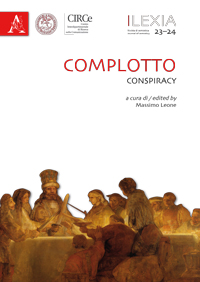Estratto da
LEXIA. RIVISTA DI SEMIOTICA
Complotto
“Tell Me What You [Do Not] Eat, and I Shall TellYou What You Are”. Food, Health and Conspiracy Theories
LEXIA. RIVISTA DI SEMIOTICA
Complotto
“Tell Me What You [Do Not] Eat, and I Shall TellYou What You Are”. Food, Health and Conspiracy Theories

A well–known aphorism by Brillat–Savarin (1825) states: “Tell me what you eat, and I shall tell you what you are”. In fact, food represents a fundamental component of life, encompassing different spheres and moments. It provides not only the energy the body consumes, but also the very substance of the body. Moreover, from a subjective point of view, people often believe or fear, adhering to a sort of magical thinking, that food acts on their organism or on their identity by analogical contamination, integration, or impregnation (Fischler 1988). That has become particularly evident in contemporary foodscapes, mainly according to a ‘negative logic’ that would require rephrasing Brillat–Savarin’s aphorism as follows: “Tell me what you do not eat, and I shall tell you what you are”. Lately, food habits forbidding the consumption of specific ingredients (e.g., vegetarianism, veganism, etc.) or even biological molecules and other nutritional materials (e.g., gluten–free movements, protein– based diets, etc.) have spread and become increasing visible, further enhancing the importance of taboos for both the sociocultural order and the processes of identity building. At the crossroad of physiology and medicine, on the one hand, and the sociocultural dimension, on the other hand, food defines people’s identity primarily in negative terms, through prohibitions and restraints. The essay deals with the recent spread of gluten–free movements and with the vertiginous increase in gluten sensitivity rates, which have resulted in the diffusion of conspiracy theories that explain these phenomena as caused by the globalization of markets and the misuse of genetic modifications. The analysis of relevant case–studies leads to describe the features and internal mechanisms of the specific rhetoric underlying such discourses, also relating to more general observations on conspiracy theories.
| pagine: | 327-343 |
| DOI: | 10.4399/978885489931520 |
| data pubblicazione: | Giugno 2016 |
| editore: | Aracne |








